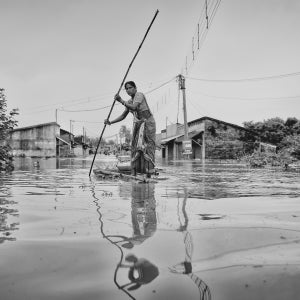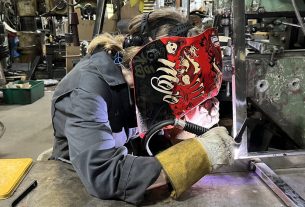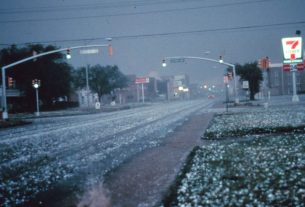Before Cyclone Aila, which tore through southwest Bangladesh in 2009, Farzana and her family farmed a small tranche of land in the Khulna Division in the delta of Bangladesh, where they made an income growing rice, mangos, and lemons. The storm significantly impacted agricultural land and communities, and Farzana and her family were no exception. The embankments around Farzana’s home flooded, submerging the land and washing away her home. Her livelihood was also destroyed – for her smallholder farmer family, their primary asset (land) had been decimated. Compounding these losses, both Khulna’s proximity to the coast and ongoing extreme heat has caused a significant spike in salinity, which has devastated traditional rice varietals, a staple of the community’s diet.
When an extreme climate event such as Cyclone Aila occurs and households are not well prepared, women like Farzana may resort to coping strategies that have greater negative effects on their immediate and future well-being than those experienced by men. CGAP’s new working paper on gender, climate change, and financial inclusion explores these disproportionately negative impacts on women and girls and the role financial services can play in improving women’s resilience and coping mechanisms.
Coping and adapting beyond a major climatic event
The effect of Cyclone Aila on Farzana‘s community was clear: one in five families migrated to other areas in Bangladesh and never returned. While migration may be a resilience strategy, for Bangladeshi women, it is often a last resort as it means leaving extended family members, animals, and crops behind. At the same time, staying often means living in damaged homes without clean drinking water or sanitation facilities. For Farzana and her community, there were no good options, only trade-offs.
The government, alongside NGOs, offered support in the cyclone’s wake – providing temporary shelters, rebuilding homes, sending cash transfers, and offering food baskets; however, the losses Farzana’s family faced far exceeded the support provided. Rebuilding from a natural disaster like Cyclone Aila takes years and money: for Bangladeshi women, this may mean being forced to sell their wedding jewelry, an asset that can act as an independent safeguard for women. Moreover, domestic costs may need to be cut, which primarily means food –typically the top expense for households in Khulna. In such cases, women often reduce their food intake so that other family members can eat. Farzana’s community has also seen an increased number of health complications due to climate disasters and the increased level of saline in water, resulting in rashes, urinary tract infections, and infertility.
It took several years for Farzana and her family’s crop production to reach pre-Cyclone Aila levels. However, the increased frequency and severity of cyclones, storms, heat, and flooding seen in Bangladesh today leave households in a continuous and vicious recovery cycle, with many women facing more negative impacts than men. Climate change intersects with existing social norms and economic inequalities, such as land ownership rights and patriarchal power structures, that increase the exposure and vulnerability of women and girls to the effects of a changing climate.
Gender inequality exists in various contexts and climate change is no exception
Farzana and women in Bangladesh are not alone in experiencing the negative impacts of climate change. Globally, women – especially in low-income countries – are often more exposed and more vulnerable to the impacts of climate change than men. Evidence shows that gender-based barriers to climate adaptation limit women’s resilience and adaptive capabilities. The differential impact women face has knock-on effects on health and livelihoods. In Bangladesh, while many men have adapted to new livelihoods (i.e., migrating for work or working as agri-laborers in nearby farms), for women, diversifying crops is often the only accessible livelihood adaptation path. Even for women who are able to work as agri-laborers, their daily earnings are around half those earned by men.
Overall, women face higher exposure, greater vulnerability, and fewer tools and strategies to cope with the climate-related risks faced.
Financial services are a valuable tool, yet women have less access to them
Borrowing money is often key to self-employment and women’s livelihoods. Farzana noted the vital role that credit played in rebuilding her family’s livelihoods. However, she was only eligible for limited financing, as ownership of the household land is under her husband’s name. In most cases, for women to obtain loans, the bank requires a personal guarantee and, in many cases, the men in the household end up using the loan despite it being under the woman’s name.
We are not yet seeing sufficient progress and innovation around making financial services more responsive to the climate needs of people living in poverty, let alone to the specific needs of women. A recent CGAP product scan identified relatively few climate-responsive financial products other than agricultural index insurance, and almost none developed explicitly with women in mind. In the context of Bangladesh, insurance is essentially non-existent in rural areas. Immediate and sufficient funding remains limited, often resulting in households taking costly and exploitative credit from informal money lenders or selling important assets (such as women’s jewelry). Insufficient financing impacts women more due to existing barriers, such as limited land ownership.
For example, a cash-in cash-out agent in Khulna noted that he personally carried out almost all transactions for clients, particularly for women, and that women agents are absent in the area.
Linking climate change, financial inclusion, and gender
To better understand how financial inclusion can play a role in bolstering women’s climate resilience and adaptation, CGAP explored the nexus of climate change, financial inclusion, and gender in a new working paper. Prior efforts to link the three topics are limited, leaving opportunities to support women with financial solutions in the face of climate change underexplored. This paper outlines clear and important research and action agendas suggested for development practitioners working on gender, financial inclusion, and climate change.
Addressing gender inequities around climate change is a long journey, but a critical one. CGAP is working to develop solutions that help women like Farzana build their resilience and is looking forward to partnering with others who share the same goal. As a first step, we are publishing several resources, including Strengthening Women’s Climate Resilience, Resilient Rural Women, and Bolstering Women’s Climate Resilience and Adaptation through Financial Services.



